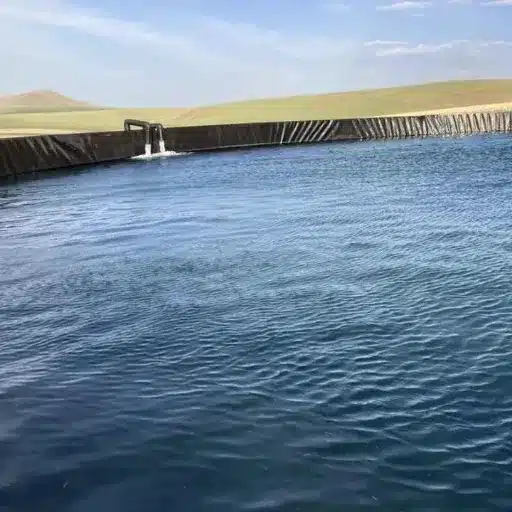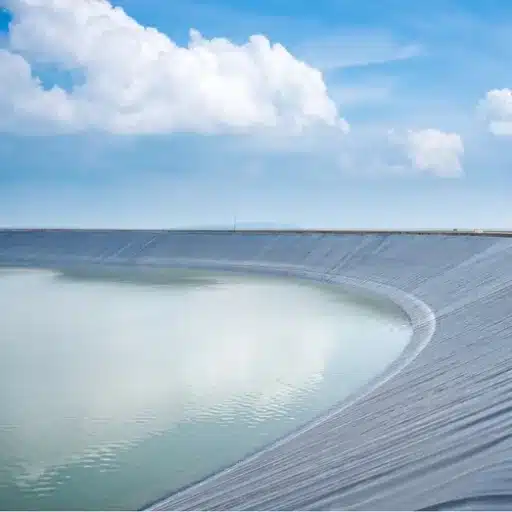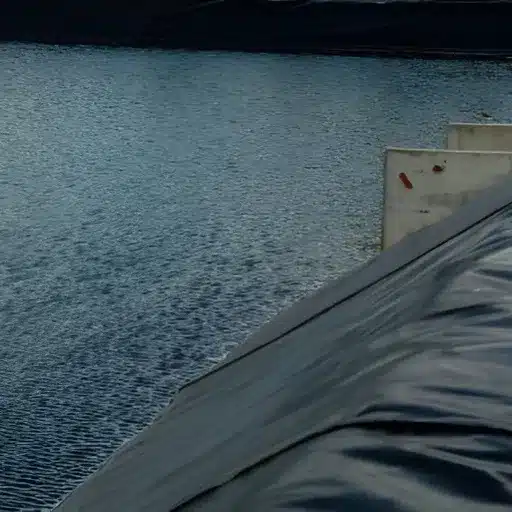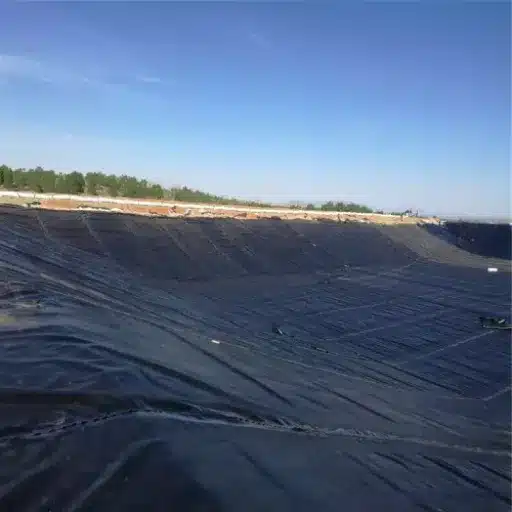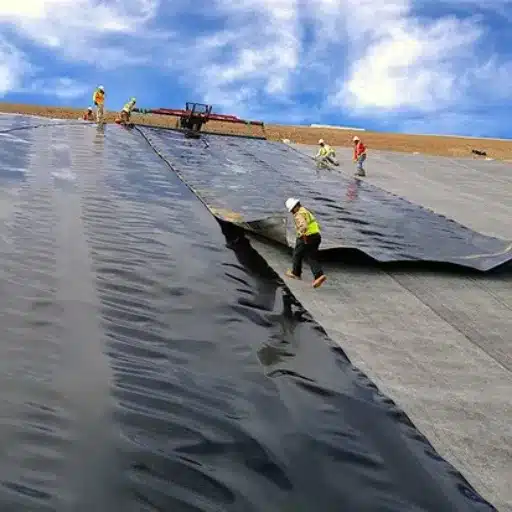When it comes to maintaining a pristine and thriving garden, dealing with relentless weeds can feel like a never-ending battle. That’s where landscape fabric comes in—a simple yet highly effective solution to keep unwanted growth at bay while promoting a healthier environment for your plants. But with so many options available, how do you choose the right one for your garden’s specific needs? In this guide, we’ll explore everything you need to know about landscape fabric, from its key benefits to the top options on the market. Whether you’re a seasoned gardener or just beginning your landscaping journey, this article will help you make an informed decision to achieve a weed-free and flourishing outdoor space.
What is Landscape Fabric?
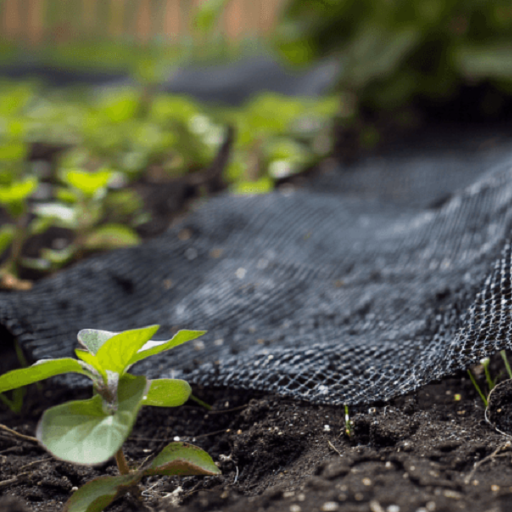
Landscape fabric is a durable, permeable material designed to suppress weeds and promote healthy plant growth. Made from woven or non-woven materials, it allows air and water to pass through while creating a barrier that blocks sunlight, preventing weed seeds from germinating. It is commonly used in gardens, flower beds, and around trees or shrubs to reduce maintenance and improve the overall appearance of outdoor spaces.
Understanding Geotextile Materials
Geotextile materials are specialized fabrics used extensively in construction, landscaping, and environmental projects. These materials are engineered to serve multiple purposes, including separation, filtration, drainage, reinforcement, and erosion control. Geotextiles are typically classified into two main types based on their manufacturing process – woven and non-woven.
Woven geotextiles are constructed by interlacing synthetic fibers to create a high-strength material that provides great load distribution, making them ideal for reinforcement and stabilization applications, such as road building and retaining walls. On the other hand, non-woven geotextiles are made from bonding or entangling fibers using heat, chemicals, or needle-punching processes. Their porous structure makes them exceptional for filtration and drainage, effectively managing water flow while preventing soil erosion.
Recent data highlights the growing use of geotextiles in infrastructure projects due to their long-lasting durability and cost-effectiveness. For example, studies indicate that these materials can extend the lifespan of roadways by up to 50% while reducing maintenance costs. Similarly, in agriculture and landscaping, geotextiles contribute to healthier soil environments, with their ability to enhance water retention and minimize nutrient loss. With advancements in textile technology, geotextiles are becoming increasingly sustainable, as many products are now created from recycled materials, ensuring minimal environmental impact.
How Does Landscape Fabric Prevent Weed Growth?
Landscape fabric is an effective tool for managing weed growth by creating a physical barrier that blocks sunlight and minimizes the conditions weeds need to thrive. By preventing sunlight from reaching the soil, landscape fabric disrupts photosynthesis, which is essential for weed germination and growth. Additionally, it forms a barrier that makes it difficult for weed seeds to penetrate and take root, reducing the proliferation of unwanted plants.
High-quality landscape fabrics are typically designed to be both permeable and durable. Their permeability allows for essential water and air flow to the soil, enabling plants to receive the nutrients they need while still restricting weeds. According to industry data, the use of landscape fabric in gardening and landscaping can reduce manual weed removal efforts by up to 90%, significantly saving time and labor.
Further enhancing its benefits, landscape fabric is often used under layers of mulch or gravel, which adds extra weight and stability to the material, ensuring it remains in place even during adverse weather conditions. Over time, this combination of fabric and covering materials offers extended weed control, leading to healthier soil ecosystems and more aesthetically pleasing outdoor spaces.
Different Types of Landscape Fabric
Landscape fabrics come in a variety of materials, each designed to suit specific gardening or landscaping needs. Understanding the distinct characteristics and applications of these fabrics helps ensure optimal performance and long-term cost efficiency.
- Woven Landscape Fabric
Woven fabrics are made from tightly woven polypropylene or polyester threads, offering exceptional durability and strength. These fabrics are highly effective in areas with heavy foot traffic and are particularly well-suited for pathways, driveways, or under pavers. They allow for water and air penetration while providing a robust barrier against weed growth. Additionally, woven fabrics typically have a lifespan of 7-10 years when properly installed and covered with a protective layer of mulch or gravel.
- Non-Woven Landscape Fabric
Unlike woven options, non-woven fabrics are crafted from bonded synthetic fibers, giving them a solid and impermeable structure. While they provide excellent weed suppression, they are less permeable and are therefore ideal for areas requiring complete moisture blocking, such as under decks or rock gardens. Non-woven fabric also works well in low-maintenance applications where soil health is not the primary concern.
- Perforated Landscape Fabric
Designed with small perforations, this type of fabric strikes a balance between weed control and water permeability. Perforated fabrics are ideal for flower beds, vegetable gardens, or areas with plants that require consistent hydration. Their lightweight construction makes them easy to handle and install, catering to beginner and expert gardeners alike.
- Biodegradable Landscape Fabric
A sustainable option for eco-conscious gardeners, biodegradable landscape fabrics are typically made from organic materials like jute or coir. Over time, these fabrics decompose naturally, enriching the soil and promoting sustainable gardening practices. They are ideal for short-term projects, such as planting annuals or temporary landscaping installations.
- Heavy-Duty Landscape Fabric
For more demanding projects, such as stabilizing slopes, retaining walls, or underlain layers in construction zones, heavy-duty fabrics offer maximum thickness and resilience. These fabrics are designed to handle higher load capacities and resist wear and tear from prolonged exposure to the elements, providing dependable protection in harsh conditions.
By selecting the appropriate type of landscape fabric for your specific application, you can enhance the efficiency, aesthetics, and sustainability of your outdoor spaces. Always pair the chosen fabric with proper installation techniques to achieve the best results and extend its lifespan.
How to Choose the Best Landscape Fabric?
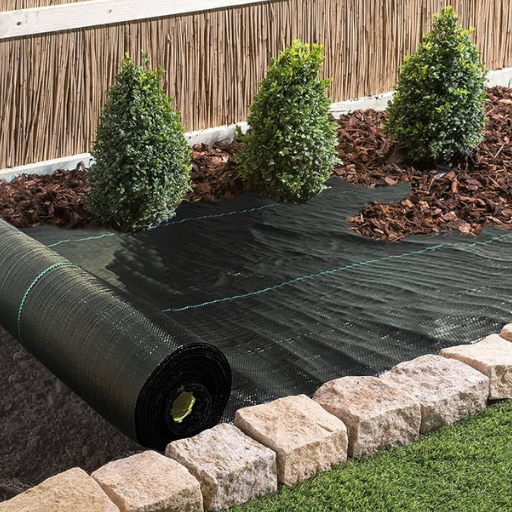
- Identify Your Needs – Determine the purpose of the landscape fabric, such as weed control, soil erosion prevention, or moisture retention. This will help narrow down your options.
- Consider Material Type – Choose between woven, non-woven, or perforated fabrics based on your application. For example, woven fabrics are durable and excellent for weed control, while non-woven fabrics are better suited for drainage and erosion control.
- Check Durability – Opt for a fabric that can withstand your local climate and exposure to elements like UV rays, heavy rain, or frost.
- Verify Permeability – Ensure the fabric allows sufficient air, water, and nutrients to reach the soil if you’re growing plants, while preventing unwanted weeds.
- Assess Installation Requirements – Select a product that aligns with your level of expertise and the tools you have available for installation.
- Read Reviews and Specifications – Look for trusted brands with positive feedback and check that the fabric’s specifications match your project’s demands.
By following these steps, you can ensure that the landscape fabric you choose will support long-term functionality and success in your outdoor spaces.
Factors to Consider When Selecting Geotextile Fabric
- Material Type
Geotextile fabrics come in two main types based on material composition: woven and non-woven. Woven geotextiles are made of durable threads interlaced for added strength and are typically used for soil stabilization and erosion control. Non-woven geotextiles, on the other hand, are crafted through bonding materials into a smooth, felt-like fabric and are ideal for drainage applications. Understanding the pros and cons of each material will help you make the right choice for your project.
- Permeability and Filtration Capabilities
Geotextile fabrics vary in permeability, allowing different levels of water and air to pass through. For drainage applications, a high-permeability, non-woven fabric is recommended to prevent waterlogging. If soil stabilization is the goal, a lower permeability fabric may be more appropriate to provide greater strength while limiting water movement.
- Load-Bearing Capacity
Evaluate the load-bearing requirements of your project. For heavy-duty applications like road construction or retaining walls, choose a woven geotextile with high tensile strength. Ensure the fabric is rated to handle the anticipated loads for optimum durability and performance.
- UV Resistance
Depending on exposure to sunlight, UV resistance is an important factor. Fabrics with higher UV resistance will last longer in projects where they are exposed above ground or with minimal coverage, ensuring that the material does not degrade prematurely due to sunlight exposure.
- Durability and Longevity
Look for geotextile fabrics with a proven track record of durability and resistance to issues like tearing, punctures, or degradation over time. These features are essential for long-term strength and reliability in demanding applications.
- Chemical Resistance
For projects where the fabric may come in contact with chemicals, such as in hazardous waste containment areas, select geotextiles that offer strong chemical resistance to withstand corrosive substances and maintain their integrity.
- Size and Weight
Consider the dimensions and weight of the fabric roll. Ensure it is sufficient to cover the area without requiring excessive seams, which can weaken performance. Lighter fabrics are easier to handle for smaller projects, while heavier fabrics suit industrial applications.
- Cost and Budget Considerations
Balance quality with cost to ensure you are getting value for your investment. Premium materials may have a higher upfront price but often provide better long-term results, reducing the need for frequent replacement or maintenance.
By evaluating these factors comprehensively, you can select the most suitable geotextile fabric that aligns with your project’s purpose, environmental conditions, and budget constraints.
The Role of Weave and Material in Weed Suppression
The effectiveness of geotextile fabrics in weed suppression is heavily influenced by the weave and material composition. Woven fabrics, typically made from polypropylene or polyethylene, are designed to provide durability and strength. Their tightly interwoven fibers act as an effective barrier against sunlight, depriving weeds of the light necessary for growth while allowing water and air to penetrate, ensuring soil remains healthy. On the other hand, non-woven fabrics, commonly composed of polyester, are designed for high permeability and are often used in areas requiring enhanced water drainage.
Studies highlight that tightly woven fabrics with a minimum 75% opacity are most effective in sunlight blocking, which is crucial for weed control. For example, materials with a thread count of 100 or more per square inch can significantly reduce light transmission to below 10%, inhibiting photosynthesis in weed seeds. Furthermore, advanced UV resistance treatments applied to these fabrics enhance their performance in outdoor conditions, extending their lifespan to 5-10 years depending on environmental exposure.
Choosing the correct material and weave also depends on the type of weeds prevalent in your region and the scale of the project. For aggressive or deep-rooted weeds like bindweed or thistle, thicker woven fabrics (above 5 oz per square yard) are recommended for optimal suppression. Conversely, for light-duty applications such as garden beds with annual weeds, non-woven options may suffice while still ensuring excellent permeability for water and nutrients.
Selecting the right combination of weave and material tailored to site-specific needs ensures effective and sustainable weed management.
Comparing Woven vs. Non-Woven Fabrics
When assessing woven and non-woven fabrics for agricultural, landscaping, or industrial use, understanding their composition and performance characteristics is crucial.
Woven Fabrics are made through an interlacing process involving vertical (warp) and horizontal (weft) threads, creating a durable and tightly structured material. This durability makes them particularly effective for long-term applications such as stabilizing soil or suppressing persistent, deep-rooted weeds. Woven fabrics generally have lower permeability compared to non-woven options but excel in tensile strength. For example, typical woven polypropylene fabrics can withstand higher mechanical stress and provide effective erosion control, making them ideal for infrastructure and heavy-duty landscaping needs.
Non-Woven Fabrics, on the other hand, are produced through bonding fibers using heat, chemicals, or mechanical techniques rather than weaving threads. They are lightweight, softer, and often highly permeable, allowing water, air, and nutrients to pass through easily. These qualities suit non-woven materials for lighter-duty applications, such as garden mulch covers or weed barriers for less aggressive weeds. Additionally, non-woven geotextiles are preferred for drainage and filtration purposes due to their enhanced permeability. For instance, their use in French drains or road underlayment helps improve water flow efficiency while preventing soil erosion.
How Does Geotextile Fabric Aid in Erosion Control?

Geotextile fabric aids in erosion control by stabilizing soil and preventing the displacement of particles caused by water or wind. It acts as a protective barrier, reducing soil erosion while allowing water to pass through without carrying sediment. Commonly used on slopes, riverbanks, and construction sites, geotextile fabric ensures long-term soil retention and minimizes environmental damage. Its durability and permeability make it an effective solution for managing erosion in various applications.
Preventing Soil Erosion with Geotextile
I use geotextile fabric to prevent soil erosion by placing it strategically in areas prone to water or wind displacement. It provides a stable protective layer that holds soil in place while allowing water to filter through without carrying sediment away. This method is particularly effective for stabilizing slopes, protecting riverbanks, and managing construction sites.
The Importance of Drainage and Erosion Control
Proper drainage and erosion control are essential for maintaining the integrity of the land and ensuring sustainable use. I prioritize these practices because uncontrolled water flow can degrade soil quality, lead to structural damage, and harm surrounding ecosystems. By implementing effective drainage systems and erosion control methods, I can manage water movement, protect vegetation, and prevent long-term environmental and economic consequences.
How to Effectively Use Landscape Fabric for Weed Control?
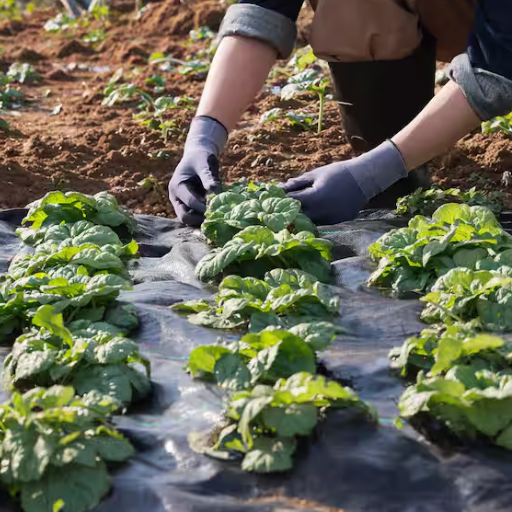
To effectively use landscape fabric for weed control, begin by preparing the area where the fabric will be installed. Clear all existing weeds, grass, and debris to create a clean surface. Next, lay down the landscape fabric over the soil, ensuring it covers the entire area and overlaps any seams to prevent weeds from growing through gaps. Secure the fabric in place with landscape staples or pins, placing them at regular intervals along the edges and seams. Finally, cover the fabric with a layer of mulch, such as wood chips or gravel, to enhance its effectiveness and improve the appearance of the area. Regularly inspect the fabric for tears or weeds and address any issues promptly to maintain its performance.
Steps to Properly Install Garden Weed Barrier
- Minimize Weed Growth
By blocking sunlight and creating a physical barrier, garden weed fabric drastically reduces the growth of unwanted weeds. According to gardening experts, this method can decrease weed infestations by up to 90%, saving you time and effort on maintenance.
- Retain Soil Moisture
Garden weed barriers help retain moisture in the soil by reducing evaporation, ensuring your plants stay hydrated for longer periods. Studies show that using a weed barrier can reduce water loss in garden beds by nearly 50%, which is especially beneficial during hot and dry seasons.
- Improve Soil Temperature Regulation
Weed barriers help moderate soil temperatures, keeping plant roots warm during cooler months and preventing excessive heating during summer. This temperature stability promotes healthier root growth and enhances plant productivity.
- Reduce Maintenance Costs
With less need for chemical herbicides or frequent weeding, a weed barrier is a cost-effective, long-term solution for maintaining your garden. For example, studies indicate using garden fabric can lower weeding time by over 70% annually, leaving more time to focus on other gardening tasks.
- Enhance Visual Appeal
Covered with mulch, gravel, or bark, weed barriers provide a clean, professional look to your garden beds and landscaping areas. A well-maintained garden bed covered with a weed barrier contributes to an organized and polished outdoor space, increasing your garden’s aesthetic appeal.
By applying these steps and understanding the significant benefits of using a garden weed barrier, you can create a more efficient, low-maintenance, and visually pleasing gardening environment.
Using Landscape Pins for Stability
Landscape pins are essential for securing weed barriers, ensuring that the material stays firmly in place even during harsh weather or heavy foot traffic. These U-shaped metal or plastic pins are designed to pierce through the fabric and anchor it into the soil, preventing unwanted movement and maintaining the integrity of your garden design. To achieve optimal stability, place the pins approximately 12 to 18 inches apart along the edges of the barrier, with additional pins used at the fabric’s corners and overlapping sections.
Research shows that using high-quality galvanized steel pins can provide superior durability, as they are resistant to rust and corrosion, making them suitable for long-term outdoor use. Additionally, for larger landscaping projects, utilizing pins with a wider gauge offers increased holding capacity, especially in loose or sandy soils. By combining a strategic layout with the right type of pins, you can significantly enhance the performance of your weed barrier, ensuring a well-maintained and professional-looking garden for years to come.
Maintaining Your Weed Barrier Landscape Fabric
To ensure your weed barrier landscape fabric continues to perform effectively over the years, it’s important to incorporate proper maintenance practices. Start by periodically inspecting the fabric for signs of wear, such as tears, fraying, or visible weed growth through seams or punctures. Addressing these issues early can prevent further damage and maintain its functionality.
Adding a new layer of mulch or gravel on top of the fabric every 6-12 months can provide additional protection against sunlight exposure, which can degrade the material over time. Studies show that UV exposure is a leading cause of fabric deterioration, particularly in regions with intense sunlight. Keeping the top layer replenished not only extends the lifespan of the fabric but also enhances its efficiency in suppressing weeds.
For optimal drainage, always ensure that no debris or organic matter is clogging the fabric layers. Over time, soil, fallen leaves, or dirt can accumulate, leading to water pooling which might weaken the barrier or promote weed germination. Using a garden rake or leaf blower to remove debris regularly is an easy way to keep the surface clear.
If weeds do appear despite the barrier, remove them immediately by pulling them out carefully to avoid creating larger holes in the fabric. Data suggests that persistent growth on top of fabric can occur when soil accumulates sufficiently to allow roots to anchor, so keeping the surface clean significantly reduces this risk.
Lastly, ensure that you’re using high-quality pins or staples to keep the fabric securely anchored, especially after heavy rains or strong winds. Regularly checking the edges and re-securing any loose sections will help maintain the barrier’s integrity and improve its overall effectiveness. By following these steps, your weed barrier landscape fabric can provide a clean, low-maintenance gardening solution for many seasons to come.
What are the Benefits of Using Geotextile Landscape Fabric?
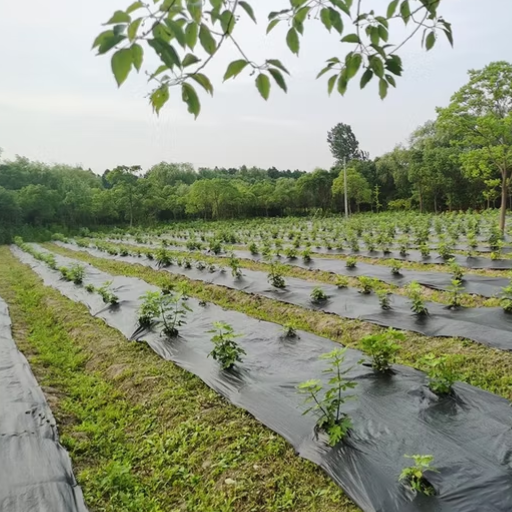
- Weed Prevention: Geotextile fabric acts as a physical barrier, inhibiting weed growth while allowing water and nutrients to penetrate the soil.
- Improved Soil Health: By reducing weed competition, it helps retain moisture and promotes healthier plant growth.
- Erosion Control: The fabric stabilizes the soil, minimizing erosion caused by rain or water runoff.
- Durability: High-quality geotextile fabrics are designed to withstand natural elements, lasting for several seasons without frequent replacement.
- Low Maintenance: With its ability to suppress weeds and reduce soil displacement, it decreases the time and effort needed for garden upkeep.
Long-Term Weed Control Solutions
Implementing long-term weed control strategies involves a combination of proper garden planning, modern practices, and reliable tools. Below are some effective methods supported by data and research:
- Mulching with Organic Materials
Studies show that applying a thick layer of organic mulch, such as straw, wood chips, or shredded leaves, can reduce weed growth by up to 90%. Mulch creates a physical barrier that deprives weeds of sunlight, while also enhancing soil quality over time. For optimal results, maintain a mulch thickness of at least 2–3 inches.
- Crop Rotation and Companion Planting
Crop rotation breaks the life cycle of persistent weeds by preventing them from adapting to specific planting patterns. For instance, alternating between cereals and legumes has been shown to significantly reduce weed infestations. Meanwhile, companion planting, such as pairing marigolds with vegetables, naturally deters unwanted plants and pests from encroaching on key crops.
- Geotextile and Landscape Fabrics
Advanced landscape fabrics have been developed with improved permeability and UV resistance, allowing them to maintain effectiveness over multiple growing seasons. When properly installed and anchored, geotextile materials effectively reduce weed emergence across vast areas by blocking sunlight and preventing seed germination.
- Cover Crops
Cover crops, like clover or ryegrass, are an excellent natural weed suppressant. Research highlights that dense cover crops can eliminate weed growth by occupying the soil and outcompeting weeds for resources. Apart from weed control, these crops contribute to soil enrichment, promoting healthier root systems for future plantings.
- Herbicide Alternatives and Natural Solutions
While chemical herbicides may still be used selectively, non-toxic alternatives like vinegar-based sprays or essential oil solutions are gaining popularity. A solution containing 20% acetic acid has been proven to suppress top growth in broadleaf weeds effectively. Always perform spot tests to ensure safety for surrounding plants.
- Proper Spacing and Dense Plantings
Overcrowding is a crucial strategy to reduce open soil spaces where weeds can thrive. Scientific data suggests that maintaining dense plantings can suppress weed seed germination by diminishing access to sunlight and other essential growth conditions.
Each of these strategies, when combined, ensures effective, sustainable weed management while fostering a healthier, more productive garden environment. Adopting an integrated approach minimizes the need for constant intervention, allowing plants to flourish naturally.
Enhancing Garden Aesthetics and Health
Creating a visually appealing and thriving garden requires a combination of strategic planning, proper maintenance, and informed practices. Here are essential methods supported by modern research and sustainable principles:
- Diverse Plant Selection
Incorporating a wide variety of plants not only adds visual interest but also fosters biodiversity. Studies highlight that diverse plantings create habitats for beneficial insects, such as pollinators and pest predators, which naturally support plant health and reduce dependency on chemical interventions.
- Efficient Watering Techniques
Modern irrigation methods, including drip systems and soaker hoses, ensure efficient water use by targeting the root zones. This reduces water waste and minimizes the risk of fungal diseases caused by excessive moisture on leaves and stems. Implementing rainwater collection systems also aids sustainability and lowers water bills.
- Healthy Soil Management
The foundation of a vibrant garden lies in nutrient-rich, well-structured soil. Regularly adding organic matter, such as compost or rotted manure, improves soil texture and fertility. Data shows that gardens enriched with organic material support up to 25% more microbial activity, which is essential for plant nutrient uptake.
- Seasonal Pruning and Deadheading
Maintaining garden aesthetics is enhanced by routine pruning and deadheading. Removing spent blooms and trimming overgrown branches promotes consistent growth and encourages more seasonal flowering.
- Integrated Pest and Disease Management (IPDM)
Utilizing a combination of natural predators, resistant plant varieties, and regular monitoring can significantly reduce pest outbreaks. Studies emphasize that integrating these methods lowers the occurrence of disease-related plant decline by up to 30%.
By combining these techniques, gardeners create an environment where plants, pollinators, and humans can coexist harmoniously, showcasing not only beauty but also a commitment to sustainable living.
Cost-Effectiveness of Geotextile Fabric
Geotextile fabric offers a cost-effective solution for a wide range of applications in construction, landscaping, and erosion control. Its durability and versatility contribute to long-term savings by reducing maintenance and repair needs. For instance, geotextile fabrics in road construction enhance soil stabilization and prevent premature wear, cutting down repair costs by up to 50% over several years. Furthermore, the material improves drainage efficiency, minimizing waterlogging and extending the lifespan of infrastructure projects.
When used in landscaping, geotextile fabric suppresses weed growth and enhances soil retention at a low up-front cost, decreasing the need for frequent herbicide application and soil replacement. Studies also highlight its role in erosion control, where its use on slopes and shorelines reduces sediment loss by up to 70%. With prices averaging between $0.50 and $2.00 per square foot depending on type and grade, geotextile fabric proves to be an affordable investment for both small-scale and large-scale projects, ensuring long-term environmental and economic benefits.
Reference Sources
- Weed management in landscapes – This document discusses the use of geotextiles to prevent weed growth and the importance of maintenance to ensure effectiveness.
- Assessing the knowledge of county extension agents on geotextile applications for agricultural practices in Oregon and Idaho – This research includes insights into geotextile applications for vegetation control in agricultural settings.
- Engineering and Geotechnical Tech – This report provides guidance on geotextile use, which may include weed prevention as part of erosion and vegetation management.
Top geotextile fabric Suppliers in China
Frequently Asked Questions (FAQs)
Q: What is landscape fabric, and how does it help in weed control?
A: Landscape fabric is a permeable material used as a ground cover to control weeds. It acts as a weed barrier fabric, preventing sunlight from reaching weed seeds and thus stopping weed growth.
Q: How does geotextile fabric compare to landscape fabric for weed control?
A: Geotextile fabric and landscape fabric both serve as weed barriers. However, woven geotextile fabric is more durable and often used in heavy-duty applications, while landscape fabric is typically used for garden areas to keep weeds at bay.
Q: Can I use landscape fabric under gravel paths?
A: Yes, landscape fabric can be used underneath gravel paths. It acts as a weed block and stabilizes the gravel, preventing it from sinking into the soil and stopping weeds from growing through.
Q: What are the pros and cons of using landscape fabric?
A: The pros include effective weed control and reduced maintenance. The cons of landscape fabric involve potential difficulty in planting through the fabric and the need for replacement after several years if not a high-quality landscape fabric.
Q: How do I install landscape fabric for effective weed control?
A: To install landscape fabric effectively, clear the area of existing weeds, lay the fabric on top of the soil, and secure it with landscape staples. Ensure the edges overlap to block weed growth completely.
Q: Is polypropylene landscape fabric suitable for all types of gardens?
A: Polypropylene landscape fabric is versatile and can be used in most garden areas. It’s especially effective as a garden weed barrier fabric in flower beds and vegetable gardens to control weeds.
Q: What is the difference between woven and non-woven geotextile fabric?
A: Woven geotextile fabric is made by weaving fibers together, offering high strength and durability, ideal for heavy-duty applications. Non-woven geotextile fabric is made by bonding fibers together and is suitable for lighter applications like garden weed barrier fabric.
Q: Can I plant directly through landscape fabric?
A: Yes, you can plant through landscape fabric by cutting slits or holes in the fabric around the desired planting area. This allows you to place plants in the ground while maintaining the weed block benefits of the fabric.
Q: How often should landscape fabric be replaced?
A: The lifespan of landscape fabric varies depending on its quality and environmental conditions. High-quality landscape fabric can last several years, but it’s advisable to check for any areas where weeds might penetrate and replace as needed.
Q: Does using landscape fabric reduce the need for pulling weeds manually?
A: Yes, using landscape fabric significantly reduces the need for pulling weeds manually. By acting as a weed barrier fabric, it minimizes the number of weeds that can grow, making maintenance easier.


